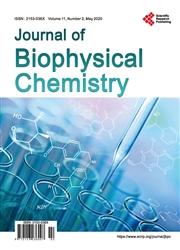Gibbs-Donnan Potential as a Tool for Membrane Vesicles Polarization
引用次数: 1
Abstract
It has been theoretically predicted that under conditions leading to Gibbs-Donnan equilibrium in case when size of one compartment is very different from another (as in system “membrane vesicle/liposomes—incubation medium”) stable transmembrane potential can be formed, which value is sufficient to fit requirement of real transmembrane potential. Four partial cases were considered with different location and charge of impermeable ion and it was concluded that locations of impermeable ions in medium provide stable transmembrane potential with sufficient value of 60 - 70 mV. Potential-sensitive probe, such as DiOC6(3) and oxonol VI, were used to confirm the calculated potential. According to the change in fluorescence level and emission/excitation shift, a stable and relatively high transmembrane potential can be formed if salt of impermeable ion is located in incubation medium. Impermeable cations and anions may be used to create positive and negative transmembrane potential respectively.Gibbs-Donnan电位作为膜囊极化的工具
从理论上预测,在导致Gibbs-Donnan平衡的条件下,当一个腔室的大小与另一个腔室的大小相差很大时(如在“膜泡/脂质体-培养液”系统中),可以形成稳定的跨膜电位,其值足以满足实际跨膜电位的要求。考虑了4种不透离子位置和电荷不同的局部情况,认为介质中不透离子的位置提供了稳定的跨膜电位,其足够值为60 ~ 70 mV。用DiOC6(3)、oxonol VI等电位敏感探针对计算电位进行确认。根据荧光水平的变化和发射/激发位移,在培养介质中加入不渗透离子盐可以形成稳定且较高的跨膜电位。不可渗透的阳离子和阴离子可分别用于产生正的和负的跨膜电位。
本文章由计算机程序翻译,如有差异,请以英文原文为准。
求助全文
约1分钟内获得全文
求助全文

 求助内容:
求助内容: 应助结果提醒方式:
应助结果提醒方式:


